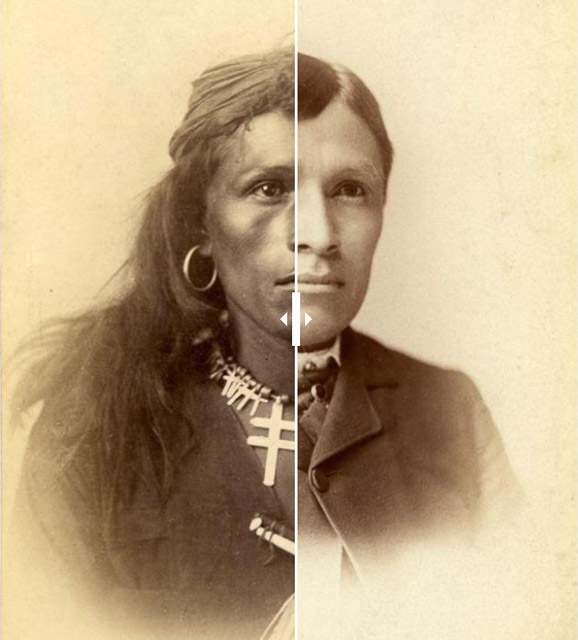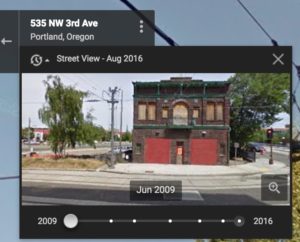Created with two archival photographs
Tom Torlino – a student at Carlisle Indian School, 1882 and 1885.
More about Tom at my post on Medium.
Pro tip: get the eyes aligned
I’m excited about JuxtaposeJS – a new free web-based “storytelling” tool from the Knight Lab at Northwestern University. As they describe it: “JuxtaposeJS helps storytellers compare two pieces of similar media, including photos, and GIFs. It’s ideal for highlighting then/now stories that explain slow changes over time (growth of a city skyline, regrowth of a forest, etc.) or before/after stories that show the impact of single dramatic events (natural disasters, protests, wars, etc.).”
I think it’s a great tool for students and teachers who want to explore themes of continuity and change. While it could be used to compare and contrast in subjects across the curriculum, I’ve created a few examples using historical content.
I selected pairs of historical and contemporary images with elements that are consistent and aspects that change. But the challenge is to size and crop the images so that the consistencies align. To accomplish that, I used another free tool – Google Slides – to position and crop each pair of images and export as JPGs before importing into JuxtaposeJS. (Scroll to the bottom of this post for my workflow video that illustrates each step of the process.)
Created with archival photograph paired with a screenshot I took from Google Street View.
Portland Ore Engine No 2 – 510 NW 3rd Ave.
Pro tip: choose a historic image that is shot from an angle similar to Street View. Street View is made up of a series of still images. You may need to navigate slightly on the street to get a shot that matches. Street View has been shooting for years. Use the drop down timeline (highlighted here) in upper left of Street View that has the angle and lighting that works best for your Juxtapose
Archival photograph of paired with photograph I took in the same location.
Taylor Hotel entrance Circa 1920
Pro tip: bring along a print out of historic photo to line up you new shot. Maybe you’ll get lucky (like I did) and find a SUV parked in the right spot.
Here’s a video that details my workflow for this project
You’ll see how I used the transparency feature in Google Slides to create two well-aligned images that I imported into JuxtaposeJS via Dropbox. JuxtaposeJS supports both vertical and horizontal sliders. Pick the orientation that does a better job of concealing or revealing the continuity and change. Once the images are “published” at JuxtaposeJS they can be imported into your web via an iFrame embed as I have done in this post.
Image credits:
Tom Torlino
Portland Ore Engine No 2
Taylor Hotel Entrance. 347 SW 3rd Ave Portland Oregon Courtesy of Oregon Nikkei Legacy Center ONLC 533


